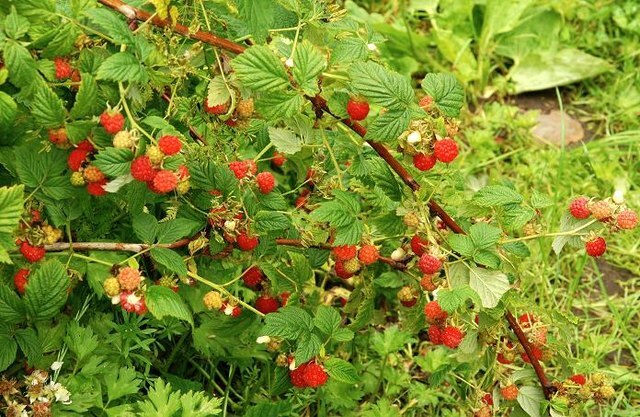Collection: Raspberry & Blackberry Bushes
- Site Selection: - Choose a location with full sun exposure, as both raspberries and blackberries thrive in sunlight. - Ensure the soil is well-drained and rich in organic matter. Avoid areas where water tends to pool.
- Soil Preparation: - Test the soil pH; it should be between 5.5 and 6.5 for optimal growth. - Amend the soil with compost or well-rotted manure to improve fertility and drainage.
- Planting Time: - Plant raspberries and blackberries in early spring when the soil is workable. - In warmer climates, fall planting is also an option.
- Planting Process: - Space raspberry plants about 2-3 feet apart in rows that are 6-8 feet apart. - Blackberry plants should be spaced 3-5 feet apart in rows 8-10 feet apart. - Dig a hole large enough to accommodate the root system, and plant at the same depth they were growing in the nursery.
- Care and Maintenance
- Watering: - Water the plants regularly, especially during dry spells. Aim for about 1-2 inches of water per week. - Avoid overhead watering to reduce the risk of fungal diseases.
- Mulching: - Apply a layer of mulch around the base of the plants to conserve moisture, suppress weeds, and maintain a consistent soil temperature.
- Pruning: - For raspberries, prune out the old canes that have fruited after harvest. For blackberries, prune in late winter or early spring before new growth begins. - Regular pruning helps improve air circulation and sunlight penetration, reducing disease risk.
- Fertilization: - Fertilize in early spring with a balanced fertilizer or one high in phosphorus and potassium to promote fruiting. - Avoid excessive nitrogen, which can lead to lush foliage but poor fruit production.
- Pest and Disease Management: - Monitor for common pests like aphids and spider mites, and use appropriate organic or chemical controls if necessary. - Watch for signs of diseases such as cane blight or powdery mildew, and remove affected parts promptly.

-
 Sold out
Sold outCaroline Red Raspberries
Regular price $8.00 USDRegular priceUnit price / per -
 Sold out
Sold outDarrow Thorny Blackberries
Regular price $8.00 USDRegular priceUnit price / per -
 Sold out
Sold outFall Gold Raspberries
Regular price $8.00 USDRegular priceUnit price / per -
 Sold out
Sold outHeritage Red Raspberries
Regular price $8.00 USDRegular priceUnit price / per -
 Sold out
Sold outLatham Red Raspberries
Regular price $8.00 USDRegular priceUnit price / per




